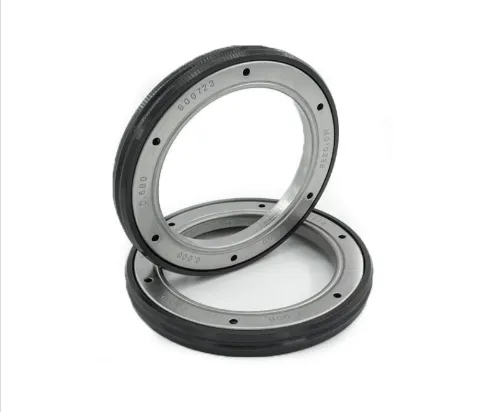front engine oil seal
The Importance of Front Engine Oil Seals in Vehicle Maintenance
When it comes to vehicle maintenance, one might overlook the small components that play crucial roles in the engine's overall performance. One such component is the front engine oil seal. While it may seem insignificant at first glance, the front engine oil seal is vital in ensuring that your engine runs smoothly and efficiently. In this article, we will explore the function, types, signs of wear, and the importance of maintaining the front engine oil seal.
What is the Front Engine Oil Seal?
The front engine oil seal, often referred to as the crankshaft seal, is designed to prevent engine oil from leaking out of the engine's front end, specifically around the crankshaft. This seal is typically made of a durable rubber or synthetic material that can withstand high temperatures and pressures generated by the engine. Its primary function is to create a tight seal around the crankshaft, keeping the engine oil contained within the oil pan and ensuring that it circulates effectively to lubricate the engine components.
Types of Front Engine Oil Seals
There are several types of front engine oil seals, each designed for specific vehicles and engine configurations. The most common are
1. Lip Seals These are the traditional seals that feature a lip that presses against the crankshaft to prevent oil leakage. They are engineered to accommodate a specific shaft diameter and will often be made from materials that resist wear and heat.
2. V-Seals Sometimes used in conjunction with lip seals, V-seals provide additional confinement by creating a dual-sealing action. These seals are especially beneficial in high-performance engines subjected to extreme conditions.
3. Dual-Lip Seals Designed to provide an extra layer of protection, dual-lip seals reduce the risk of oil leakage even further. They are often used in newer engine designs for enhanced reliability.
Signs of Wear and Failure
front engine oil seal

Just like any mechanical part, front engine oil seals are prone to wear and eventually failure. Identifying the signs early can save drivers from costly repairs and extensive engine damage. Here are some common indicators of a failing front engine oil seal
- Oil Leaks One of the most telling signs that an oil seal has failed is the presence of engine oil leaks. If you notice oil pooling under your vehicle or seeping from the front of the engine, it's crucial to inspect the oil seal.
- Oil Seepage Even small amounts of oil seeping from the seal can be a sign of wear. If you frequently check your oil levels and notice a gradual decrease, it may be time to investigate the front engine oil seal.
- Increased Engine Noise A compromised seal can lead to a lack of lubrication in the engine, resulting in increased friction and noise. If you hear unusual sounds from your engine, don’t disregard them.
- Burning Smell If oil leaks onto the hot engine components, it can create a burning smell. This not only poses a risk of engine damage but can also lead to potential fire hazards.
Importance of Maintenance
Maintaining the front engine oil seal is essential for several reasons. First and foremost, it prevents oil leaks that can lead to oil starvation and engine damage. Regular checks and timely replacements can significantly extend the life of your engine.
Additionally, a well-functioning oil seal contributes to optimal engine performance and efficiency. It helps maintain the necessary oil pressure within the engine, ensuring all parts are properly lubricated. This, in turn, can lead to better fuel economy and a smoother driving experience.
In conclusion, the front engine oil seal may be a small component, but its role in vehicle maintenance is paramount. Understanding its function, recognizing the signs of wear, and ensuring regular maintenance can help keep your engine running efficiently for years to come. So next time you think about vehicle upkeep, don’t forget the importance of this unassuming yet essential part of your engine!
-
oil-drain-plug-washer-reusable-types
News Aug.22,2025
-
oil-drain-plug-replacement-guide
News Aug.22,2025
-
heavy-duty-seal-waterproof-features
News Aug.22,2025
-
engine-oil-seals-installation-guide
News Aug.22,2025
-
seal-oil-for-sale-high-temperature-grade
News Aug.22,2025
-
cassette-seal-compact-design
News Aug.22,2025
-
Simplifying Oil Changes: A Comprehensive Guide to Oil Drain Plugs and Their Variants
News Aug.04,2025
Products categories















